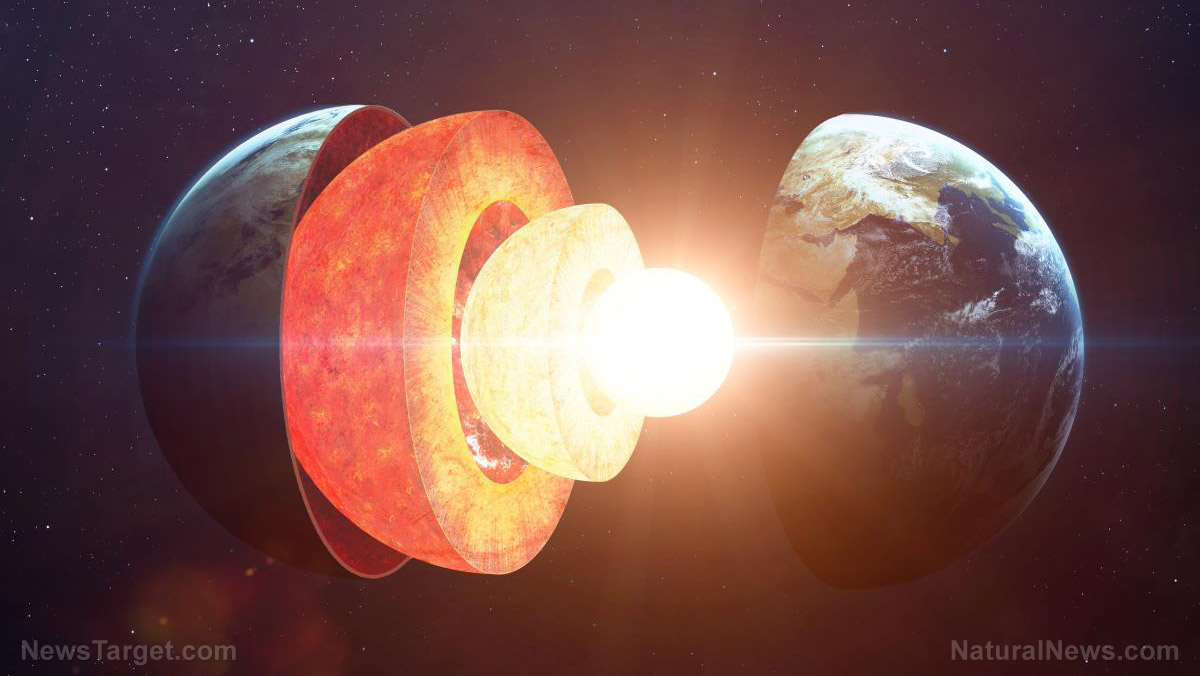Scientists suggest “gravity portals” can turn dark matter into ordinary matter
04/22/2022 / By Virgilio Marin

Over 80 percent of the matter in the universe exists in a form that scientists cannot directly observe. Known as “dark matter,” this mysterious substance cannot be seen or detected by even the most powerful telescopes. Now, a recent study shows what potentially happens to dark matter when it interacts with gravity.
Researchers from the Chinese Academy of Sciences propose the existence of “gravity portals,” where the sheer pull of gravity brings two dark matter particles (whatever they are) together and destroy them. This process, in turn, produces ordinary, observable particles that could collide with other particles to produce powerful gamma rays.
What is dark matter?
There is no direct evidence for dark matter, but scientists agree that it exists in all likelihood based on observations. In the 1970s, astronomers studying spiral galaxies expected to see objects in the galactic center to move faster than on the outer edges. To their surprise, stars in both locations traveled at the same velocities.
This suggests that galaxies contain more matter than could be seen. Without additional matter to generate gravity, galaxy clusters would have flown apart.
Since the discovery, there have been many attempts to come up with a modified theory of gravity to account for this extra matter. Yet all of them fell short, and each new measurement showed that there is only so much ordinary matter (that is, anything made up of a proton, electron and neutron) in the cosmos.
So this extra matter must exist and it interacts only with gravity. Astronomers call this extra matter “dark matter” because it cannot be seen or observed through telescopes. It does not emit, absorb or reflect light nor does it interact with any known particle and any other force of nature.
The link between dark matter and gamma rays
In its essence, the study could help crack the nature of dark matter and explain why gamma rays are so abundant in the center of galaxies.
Gamma rays are the highest-energy form of radiation possible. They commonly come into existence from extremely high-energy events, such as stars going supernova. However, there are more gamma rays in the galactic center than there ought to be given how rare such cataclysmic events are.
Now, researchers suggest that gamma rays may have originated in part from the destruction of dark matter through gravity.
In a paper posted on the preprint website arXiv, the team posited that chance gravity interactions can bring dark matter particles together and annihilate them in the process. Those chance interactions are known as “gravity portals” because they offer a way for particles to interact through gravity alone. They are likely more common in the galactic center, where dark matter is thought to occur in higher concentrations.
In turn, the collision of two dark matter particles can produce high-energy electrons called “leptons,” which are known to travel throughout the galactic center. When leptons slam into low-energy photons floating around the cosmos, the researchers posit, the collision can boost the latter’s energy to the extent that the photons begin to give off gamma rays. (Related: Challenging assumptions about the universe: Study suggests black holes could be made of dark energy.)
In sum, the study shows how dark matter potentially behaves and where some of the gamma rays in the galactic center might have come from. While the study’s findings are theoretical, they can greatly advance our understanding of some of the most mysterious properties of the universe.
Read more fascinating studies about the cosmos at Cosmic.news.
Sources include:
Submit a correction >>
Tagged Under:
breakthrough, cool science, cosmic, dark matter, discoveries, future science, gamma rays, Gravity, gravity portals, leptons, radiation, radiation science, research, Space, Universe
This article may contain statements that reflect the opinion of the author
RECENT NEWS & ARTICLES
COPYRIGHT © 2017 FUTURE SCIENCE NEWS




















